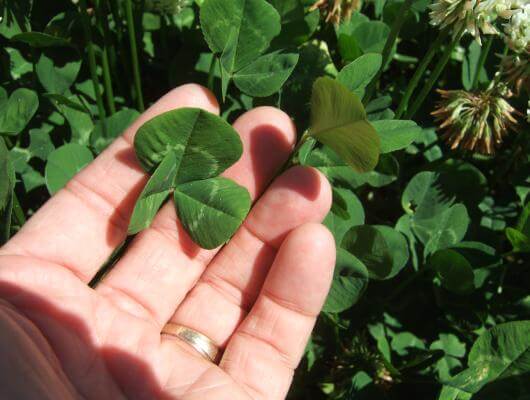Defining White Clover - Trifolium repens
White clover may be the most important and widely used pasture legume in the world today. It can be found growing naturally from the Arctic Circle to all parts of the temperate regions of the world. This diversity permits it to be grown for seed in numerous parts of the world as well. In Oregon, white clover is a fairly small crop, with annual harvests between 3 and 6 million pounds. However, as international interests increase, Oregon production is on the rise.
While some might refer to this species as simply “white clover”, there are actually multiple types of white clovers, botanically divided up into three distinct, true breeding polymorphic forms based mainly on leaf size. These type are:
- Small leaved, wild type (T. repens L. f. repens L.); also called weedy type.
- Medium leaved, common type (T. repens f. hollandicum); also called intermediate or Dutch white.
- Large leaved, ladino type (T. repens var. giganteum); simple called Ladino.
The weedy wild types are not too commonly sold as seed, although some “micro clovers” seeds may be of this type. More familiar to most white clover users are the Dutch white and Ladino types. The key differences between these two have to do with height, stolon density and flower formation. These areas also help determine the best application for each.
- Ladino types are usually taller, have less stolons and flowers mostly in the crown of the main plant. For hay applications, ladino types usually produce more tonnage. Examples of these are Haifa and Seminole.
- Dutch white types are lower growing, tiller more aggressively, and flower profusely from their stolons. These types are great for grazing, as they are more likely to spread, handle traffic stress, and naturally reseed better than their larger-leafed cousins. Examples of these are Huia, Louisiana S-1, and New Zealand white.
Since all white clovers are of the same botanical family, each of these types can be crossed with each other. The most marketable results are varieties which merge the strengths of each type. For example, a grazing-type Ladino can be the result of crossing predominately large-leafed plants with medium-leafed plants that have higher stolon density. Similarly, Dutch white types are crossed with Ladino types to improve forage yield. Smith Seed Services is currently working to bring to market both types of these crosses. We will know more next year.
We also have selections of both Dutch white and Ladino clover, as well as numerous other clovers, legumes and grasses. These are available in both raw form as well as with our exclusive Nitro-Coat® coating and pre-inoculation. Learn more about our clover offerings and Nitro-Coat® at SmithSeed.com.
Over the next number of months, we intend on highlighting select clover species, as well as adding information about specific clovers to our SmithSeed.com website.
